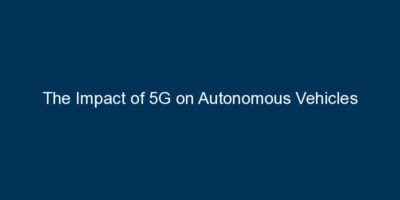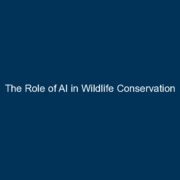The intersection of artificial intelligence (AI) and wildlife conservation marks a transformative era in efforts to preserve and protect biodiversity. This blog explores the pivotal role that AI plays in wildlife conservation, unveiling the innovative technologies and solutions that leverage artificial intelligence to address the complex challenges faced by our planet’s diverse ecosystems.
AI-Powered Monitoring and Surveillance
Smart Cameras and Image Recognition
AI-driven monitoring systems equipped with smart cameras are revolutionizing wildlife surveillance. These cameras utilize image recognition algorithms to identify and track animal species, enabling researchers to collect valuable data on population dynamics, migration patterns, and behavior. The real-time insights provided by AI-powered cameras contribute to more informed conservation strategies.
Acoustic Monitoring for Bioacoustics Analysis
AI extends its reach to the realm of bioacoustics through acoustic monitoring. AI algorithms can analyze audio recordings from ecosystems, identifying and classifying species based on their unique vocalizations. This non-invasive approach to monitoring wildlife allows researchers to assess biodiversity, detect the presence of endangered species, and monitor the health of ecosystems.
Data Analysis for Conservation Insights
Big Data Analytics for Ecological Modeling
The vast amounts of data generated by AI-powered monitoring systems are harnessed through big data analytics. These analytics enable the creation of ecological models that provide insights into the complex relationships between species, environmental factors, and human activities. Understanding these dynamics is crucial for designing effective conservation strategies that address the interconnected challenges facing ecosystems.
Predictive Analytics for Threat Assessment
AI’s predictive analytics capabilities contribute to threat assessment in wildlife conservation. By analyzing historical data, AI algorithms can identify patterns associated with poaching, habitat destruction, and climate change. This proactive approach allows conservationists to anticipate and mitigate threats before they escalate, safeguarding vulnerable species and their habitats.
Wildlife Tracking and Connectivity
GPS and Satellite Technology Integration
AI enhances wildlife tracking by integrating with GPS and satellite technologies. Tracking devices equipped with AI algorithms can provide real-time location data, offering valuable insights into animal movements, migration routes, and habitat utilization. This information is instrumental in identifying critical areas for conservation efforts and understanding the impact of human activities on wildlife.
Connectivity Mapping for Habitat Preservation
AI contributes to connectivity mapping, a process that identifies and preserves wildlife corridors and habitat connectivity. By analyzing movement patterns and landscape features, AI algorithms help conservationists prioritize areas that are essential for maintaining genetic diversity and enabling species to migrate in response to changing environmental conditions.
Anti-Poaching Initiatives with AI
Machine Learning for Anomaly Detection
One of the significant threats to wildlife is poaching, and AI is playing a crucial role in anti-poaching initiatives. Machine learning algorithms analyze data from camera traps, acoustic sensors, and satellite imagery to detect anomalies indicative of poaching activities. This early detection allows for swift intervention by conservation authorities, reducing the impact on vulnerable species.
Facial Recognition for Individual Identification
AI-powered facial recognition technology is employed for individual identification of animals. This is particularly valuable for species with unique markings or patterns. Conservationists use AI algorithms to match individual animals across various datasets, enabling more accurate population assessments and tracking the movement of specific individuals within a population.
Challenges and Considerations in AI-Driven Wildlife Conservation
Data Privacy and Ethical Concerns
The use of AI in wildlife conservation raises concerns about data privacy and ethical considerations. Balancing the collection of detailed wildlife data with the privacy and ethical treatment of animals requires careful consideration and adherence to ethical guidelines. Striking this balance is crucial for maintaining public trust and ensuring the responsible use of AI technologies.
Accessibility and Affordability
The adoption of AI technologies in wildlife conservation may face challenges related to accessibility and affordability. Ensuring that conservation organizations, researchers, and local communities have access to AI tools and technologies is essential for democratizing the benefits of AI-driven wildlife conservation.
The Future Landscape of AI in Wildlife Conservation
AI for Ecosystem Restoration
The future of AI in wildlife conservation holds promises of contributing to ecosystem restoration. AI algorithms can analyze ecological data to identify areas in need of restoration efforts, prioritize species reintroduction programs, and recommend strategies for habitat rehabilitation. This proactive approach can aid in reversing the impact of habitat degradation and loss.
Global Collaboration and Knowledge Sharing
As AI technologies continue to evolve, global collaboration and knowledge sharing become increasingly vital. The exchange of data, insights, and best practices among conservation organizations, researchers, and technology developers can amplify the impact of AI in wildlife conservation. Collaborative efforts foster innovation, address common challenges, and promote the development of scalable solutions.
Conclusion
In conclusion, the role of AI in wildlife conservation heralds a new era of possibilities for safeguarding Earth’s biodiversity. From AI-powered monitoring and data analytics to anti-poaching initiatives and wildlife tracking, artificial intelligence is proving to be a valuable ally in the efforts to understand, protect, and preserve our planet’s diverse ecosystems.
As we navigate the challenges of balancing technological advancements with ethical considerations, the future landscape of AI in wildlife conservation holds promises of enhanced conservation strategies, proactive threat mitigation, and a deeper understanding of the intricate web of life. By harnessing the potential of AI, we embark on a journey towards a more sustainable and harmonious coexistence with the natural world.




















Comments